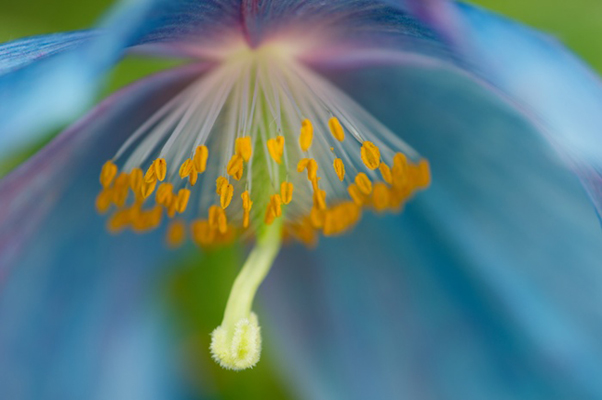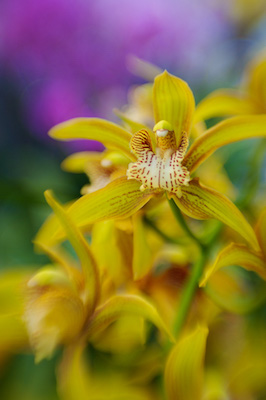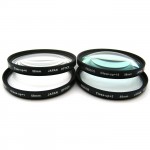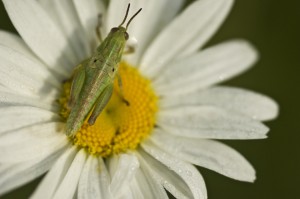Move In Close with Macro Photography
March 7, 2019 by Marie Joabar
 With spring just around the corner, it's easy to anticipate all the beautiful subjects we can capture. Whether you enjoy the flowers in your own garden, wildflowers in fields and meadows, or the exotic variety you find at your favorite botanic conservatory, learning to take better close-ups is a lesson in macro photography.
With spring just around the corner, it's easy to anticipate all the beautiful subjects we can capture. Whether you enjoy the flowers in your own garden, wildflowers in fields and meadows, or the exotic variety you find at your favorite botanic conservatory, learning to take better close-ups is a lesson in macro photography.
Although you can shoot beautiful photos with your wide angle and telephoto lenses, to capture amazing close-ups and extreme magnification of flower petals, stamens, and any interesting little bugs you find, a dedicated macro lens is a better choice. Extension tubes and close-up filters are alternatives and are discussed below.
MACRO LENSES, although pricey, offer superior image quality and edge to edge sharpness. They allow you to get closer to your subject, filling the frame with them, and revealing the tiny, fine detail that would have otherwise been too small to see.
- A true macro lens, sometimes referred to as dedicated, will give you a 1:1 reproduction ratio, meaning the subject and its image are the same size. Some lenses on the market may claim to have macro capabilities but they are not true macro lenses. Before you purchase one, check the lens specifications for the reproduction ratio.
- Another important factor to consider is the minimum focusing distance (MFD). This is the closest distance your lens can be from a subject and still achieve focus. With a true macro lens, you can get much closer than with a non macro lens of the same focal length.
For example, let’s say we were photographing a grasshopper on a flower. If I were using a 70-200mm telephoto lens zoomed to 200mm, I would have to stand 5 feet away from the flower to be able to focus on it as that is the MFD of that lens. If you were using a 200mm macro lens, you could focus on it standing as close as 18 inches away as that is the MFD of that lens. You would capture a much more interesting photo than one composed from 5 feet away.
The focal lengths of dedicated macro lenses (Nikon calls theirs micro) typically range from 50mm to 200mm. The difference between these numbers represents how physically close or far you can be from your subject and still maintain a 1:1 reproduction ratio. The larger the number, the further away you can be. If you’re photographing flowers, 60mm, 90mm or 105mm may work fine, but if you need more distance between you and your subject, like butterflies (which fly away if you get too close) a 180mm or 200mm macro lens would be better.
A few tips when using macro lenses.
- For the sharpest image, align the plane of focus to the subject plane. In other words, position the back of the camera so it’s parallel to the subject.
- Because there is such a shallow depth of field (the amount of area in focus in-front of or behind your subject), when using macro lenses, make sure to focus on the most important part.
- If shooting outdoors, hope for a still day without wind. Focusing is key with Macro and trying to lock focus on a moving flower is difficult.
 EXTENSION TUBES are a less expensive alternative to macro lenses. These are hollow tubes with circuitry on each end and are placed between the camera body and lens. They allow you to focus closer to your subject by reducing the minimum focusing distance of the lens.
EXTENSION TUBES are a less expensive alternative to macro lenses. These are hollow tubes with circuitry on each end and are placed between the camera body and lens. They allow you to focus closer to your subject by reducing the minimum focusing distance of the lens.
- Because there is no glass in the tube, there is no loss of quality.
- Some extension tube brands retain all of the lenses ability to auto focus, while with others, you may need to manually focus.
One caveat with using extension tubes is that you will lose some light. Your camera will meter for this automatically, just be aware that a longer exposure time will be needed.
 CLOSE-UP FILTERS (sometimes called diopters) are another option. These filters screw onto the front of the lens just like other filters and allow you to focus closer to your subject. Think of these as a magnifying glass for your lens. They’re found as 1X, 2X, and 3X, the larger the number the stronger the filter. Close-up filters can be stacked allowing you to get even closer, always use the strongest one next to the camera lens. You may want to avoid using more than 2 stacked together as this will affect the sharpness of your image.
CLOSE-UP FILTERS (sometimes called diopters) are another option. These filters screw onto the front of the lens just like other filters and allow you to focus closer to your subject. Think of these as a magnifying glass for your lens. They’re found as 1X, 2X, and 3X, the larger the number the stronger the filter. Close-up filters can be stacked allowing you to get even closer, always use the strongest one next to the camera lens. You may want to avoid using more than 2 stacked together as this will affect the sharpness of your image.
- Because of the shallow depth-of-filed with close-up filters, experts say it’s better not to set the aperture smaller than f11 or larger than f8 when using them.
- Depending on the quality of the glass, there may be some loss of sharpness and some distortion on the edges of the frame.
 When shooting Macro, a must have in your camera bag is a diffuser to hold over the subject and evenly spread the light striking it. These can be clipped into place with Plamp. If it is a cloudy day, thank Mother Nature for providing the clouds as a natural diffuser. Reflectors are also helpful to have on hand to throw light onto a flower.
When shooting Macro, a must have in your camera bag is a diffuser to hold over the subject and evenly spread the light striking it. These can be clipped into place with Plamp. If it is a cloudy day, thank Mother Nature for providing the clouds as a natural diffuser. Reflectors are also helpful to have on hand to throw light onto a flower.
Tripods are definitely needed to capture a sharp, in-focus subject but some people find using them in a small garden is cumbersome and limits their positions for capture. Start with a tripod and see if it’s manageable in the space you shooting in. Visit your local camera retailer. They can give you more information about the specifications and pricing of these different options and help you select the right ones for your camera and lenses.
Spend a quiet morning immersed in Macro photography now so you'll be ready when it's full bloom season.
Blue poppy and yellow orchid photos by Corey Hilz

